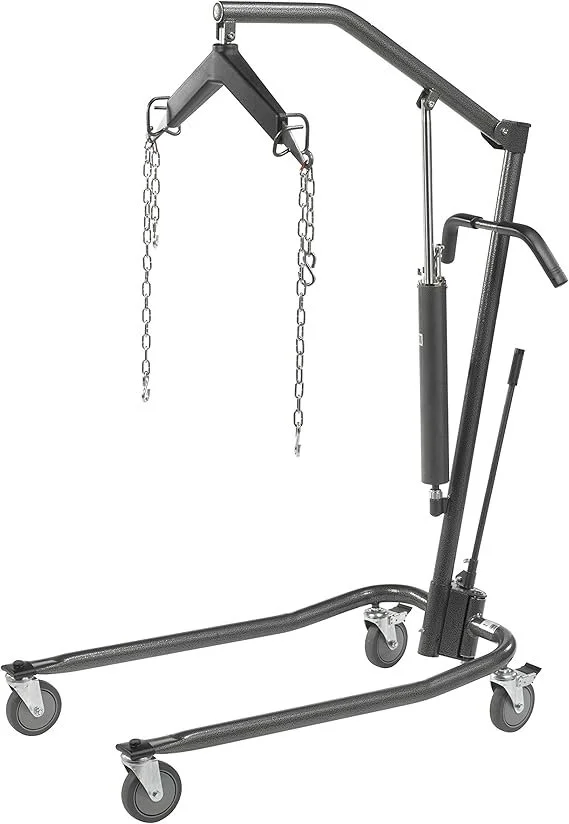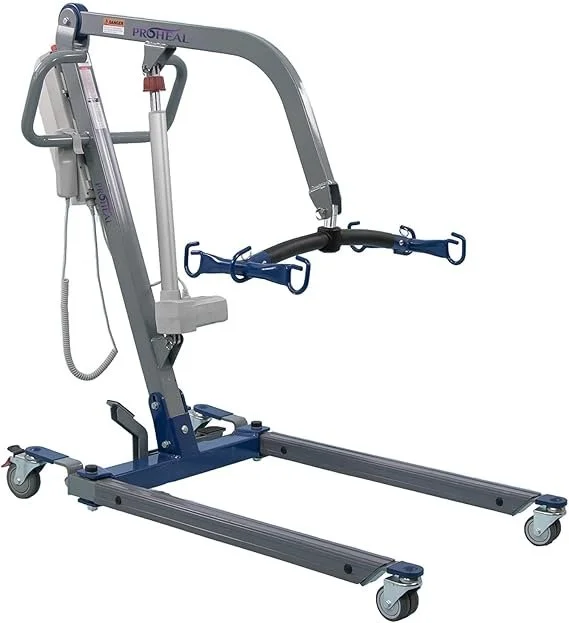How Not to Break Your Back: Real Talk on Lifting, Turning, and Transferring Without Getting Hurt
A Caregiver’s Guide to Body Mechanics, Transfer Gear, and Protecting Both of You
All it takes is one bad lift. I’ve seen careers ended over it. I’ve had my own knee pinned between a power chair and a picnic table. This stuff is no joke.
Whether you're a family caregiver or a professional, how you move matters—for your body and theirs. This post breaks down how to safely reposition, lift, and transfer someone without causing injury or burnout.
Why Body Mechanics Matter
Back injuries are the most common work-related injury in the healthcare field. And they don’t just hit hospital staff, anyone providing care at home is at risk too. Bad posture, fatigue, muscle strain—these build up fast if you’re lifting or repositioning without training or support.
But it’s not just about you. Moving someone the wrong way can hurt them, scare them, or strip away their dignity. Good body mechanics protect everyone.
The Basics: Body Mechanics 101
Bend your knees, not your back. Squat, don’t fold.
Keep your spine aligned. No twisting at the waist during lifts.
Stay close to the person. The further away they are, the heavier they feel.
Communicate. Talk through what you're doing:
“Now I’m going to raise the bed. We’re going to turn to the left.”
No pulling under the arms or grabbing the neck. Ever.
Essential Tools to Make It Easier
These tools make a world of difference. If you’re not using them yet, start now:
Transfer Belt – Great for walking assist or supported standing:
Patient Lift Transfer Belt – Blue, 4 Handles
Transfer Board – Ideal for moving between bed and chair:
DMI Wooden Transfer Board – 30"x8"
COW&COW 24" Transfer Board + 60" Belt Kit
ProHeal Electric Lift – Battery-Powered Option for Safer Transfers
If you're looking for a powered alternative to a manual hydraulic lift, the ProHeal Electric Hoyer-Style Lift takes on the heavy lifting for you. Battery-operated with smooth up/down controls, it’s great for home caregivers who need dependable performance without the pumping or strain. Especially useful for larger patients or when you're working solo.
These are assistive tools, not magic tricks. Never use a transfer belt to lift someone who cannot bear weight. Never try to wing it solo with someone fully dependent—use the gear, or ask for help.
Pro Tips from the Floor
Always lock the bed and wheelchair brakes before moving someone.
Turn off power wheelchairs. One bump on the joystick can cause a dangerous accident.
Lead with their strong side if they can help.
Shoes with nonskid soles are non-negotiable.
Block your knees and feet outside of theirs. They should lean toward you.
Draw sheets should go from head to above the knees and be rolled close to the body when turning.
When You Need a Mechanical Lift
If someone:
Can’t assist at all
Recently had spine, hip, or back surgery
Is at high risk for shearing or skin breakdown
—then use a lift. Period.
Slings should fit snugly and safely. Don’t improvise or use mismatched gear.
How to Logroll Safely
Logrolling keeps the head, torso, and legs aligned in one solid movement. It’s used after surgery or with spinal injuries.
Requires 2 to 3 people
Bed should be flat
Roll in one smooth motion—no twisting or pulling
Never attempt a logroll by yourself.
Final Word: Protect Yourself to Protect Them
You can't care for anyone if you're sidelined. One wrong lift can cost you months—or your whole career. Work smarter, not harder.
Use tools. Ask for help. And stay sharp.
Need more down-to-earth caregiving advice—without the medical jargon?
Get the book written by someone who’s lived it:
👉 The Unmedical Manual for Caregivers on Amazon





